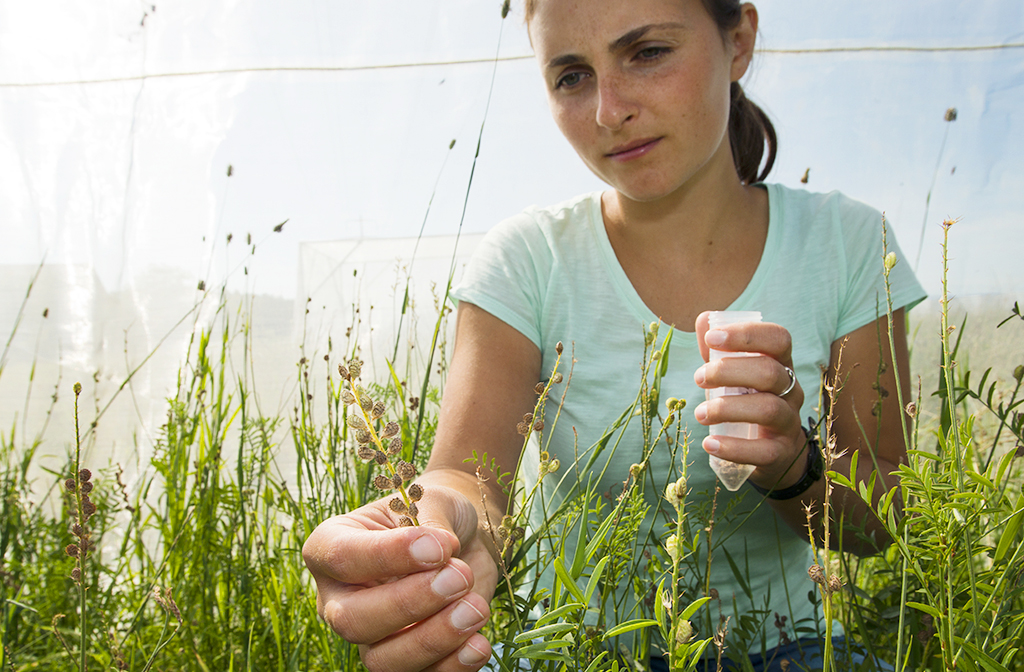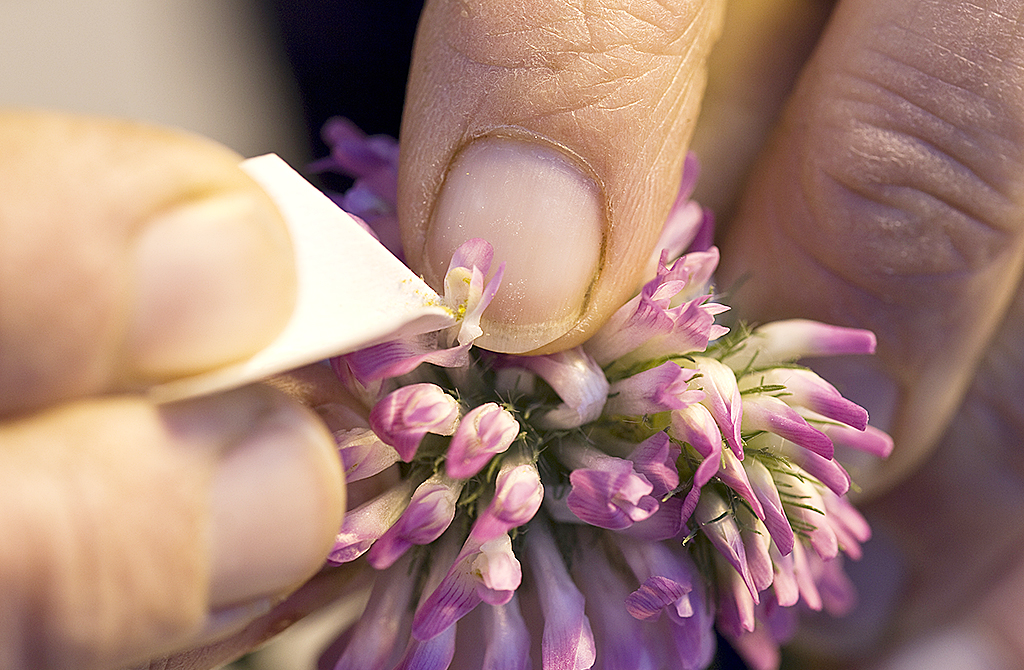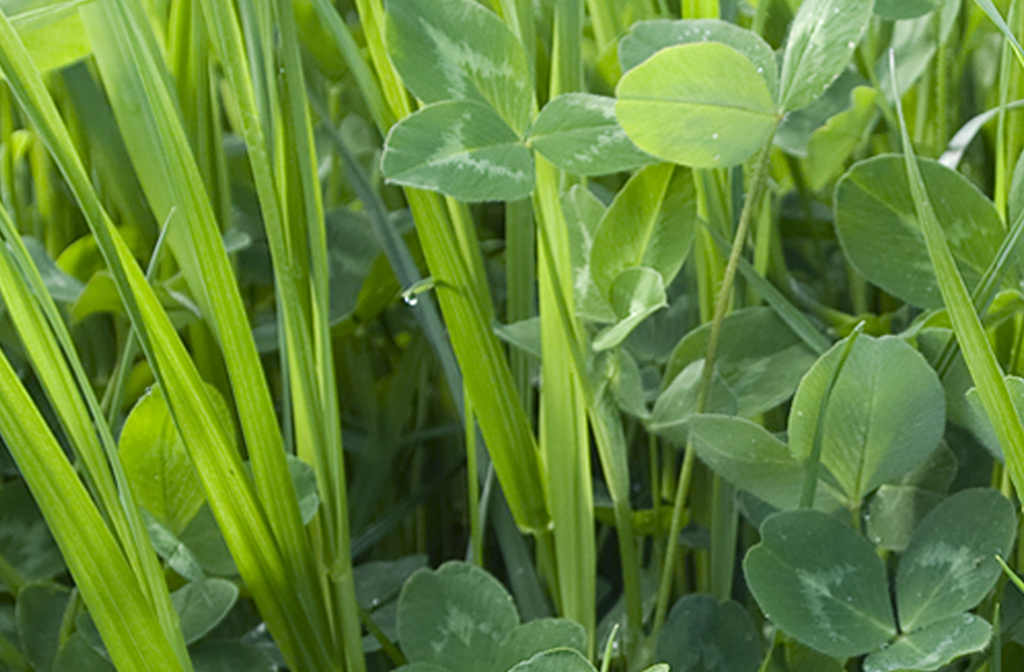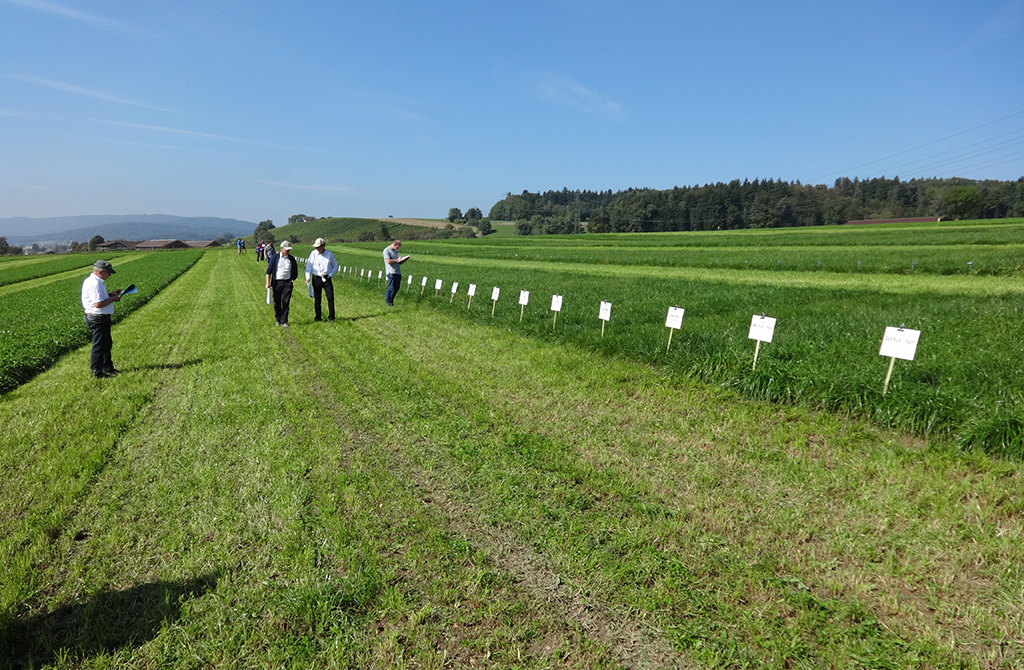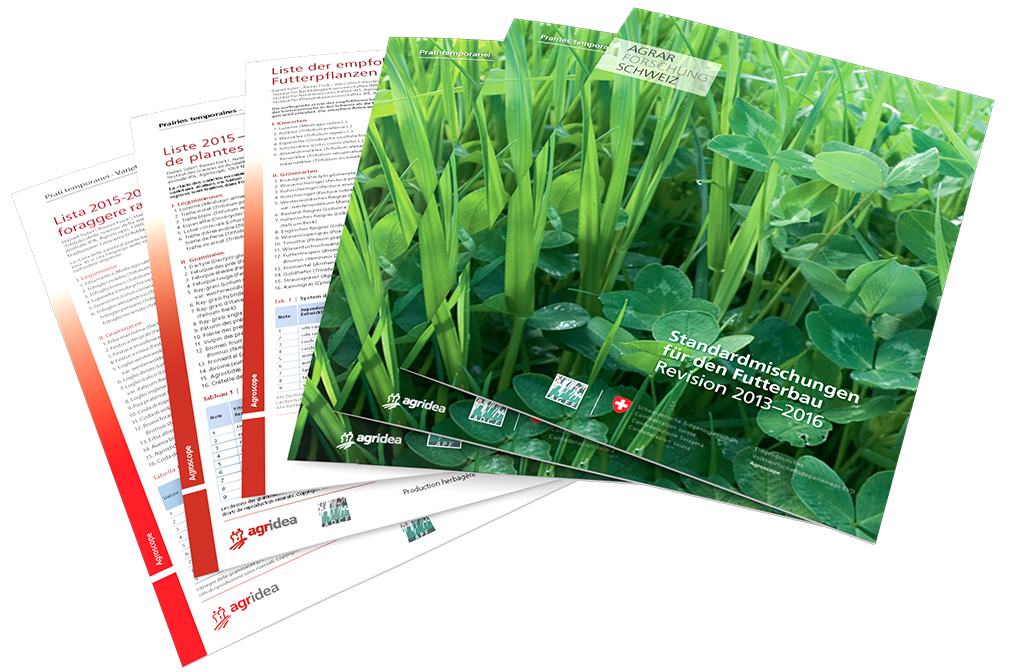Clover/grass mixtures used for forage production show significant advantages over pure grass stands in terms of resource efficiency. Agroscope researchers have discovered that the special characteristics of the clover species as well as mutually positive interactions between the different species in the mixture play a major role here. Such quality mixtures are currently achieving a market share of over eighty per cent in Switzerland.
Although the production of high-quality roughage for our livestock is of prime importance in Swiss grasslands, scarcity of resources and climate change are posing new challenges for grassland-based forage production.
Protecting Resources with Symbiosis
Nitrogen is often the main growth-limiting resource in agriculture. The industrial production of mineral nitrogen fertilisers is a possible solution, but this process requires a great deal of energy and produces large quantities of greenhouse gases. By contrast, clover species in symbiosis with bacteria can fix atmospheric nitrogen in an environmentally sound manner. In clover/grass mixtures, the fixed nitrogen also benefits the grasses. As part of the EU Project AnimalChange, Agroscope showed that with the same use of fertiliser, clover/grass mixtures furnish fifty-five per cent more protein than pure-grass stands. A proportion of just one-third clover in the sward was sufficient to achieve this.
Targeted Use of Functional Plant Characteristics
The targeted combination of plant species with different characteristics (e.g. shallow- and deep-rooted species) has proven to have a positive effect on resource efficiency as well as on the amount and stability of yields. This was established by Agroscope in the MultiSward Project, and also confirmed under grazing conditions. It was shown that the grass and clover ‘partners’ complemented one another perfectly in terms of nitrogen efficiency: the clover species were stimulated forced by the grasses towards particularly active fixation of atmospheric nitrogen, whilst the grasses ensured efficient utilisation of the available nitrogen. In addition, mixtures promoted nutrient uptake in cattle, an important aspect for grassland-based milk and meat production. The MultiSward Project was awarded the ‘especially successful’ distinction by France and the EU.
The Hunt for Bioactive Substances
Bioactive substances such as condensed tannins are capable of forming bonds with proteins in the rumen of ruminants, and can thus protect these proteins from degradation. This is especially advantageous for rations dominated by grassland forages that are high in protein, since it enables the forage protein to be used more efficiently. Agroscope is therefore making a study of tanniferous fodder legumes, including species such as lotus and sainfoin which are not yet commonly used. It was shown that both the tannin content and chemical structure of the tannins varied, and were influenced by different factors such as variety, site and cut. The effect in ruminants is strongly dependent on tannin concentration in the ration, as well as on the chemical structure of the tannins. In the projects currently underway, such as the EU project LegumePlus, the aim is therefore to characterise the tannins more precisely in terms of their structure and effect, so that tanniferous legumes can also be used efficiently in ruminant feeding in the form of mixtures with grasses.
Ongoing Improvement and Quality Assurance
Agroscope is breeding new varieties of the most important clover and grass species in forage production. These new cultivars often achieve top rankings in international comparisons. Globally available cultivars of the important forage-plant species are regularly tested under Swiss growing conditions. The best among these are published in the Agroscope List of Recommended Varieties. New clover/grass mixtures are developed and existing ones constantly improved and tested on commercial farms. The recipes for these quality mixtures are published as Standard Mixtures for Forage Production and awarded a quality label in cooperation with practice (Swiss Grassland Society, AGFF) and industry (Swiss-Seed). These quality mixtures are garnering a market share of over 80% in Switzerland.


